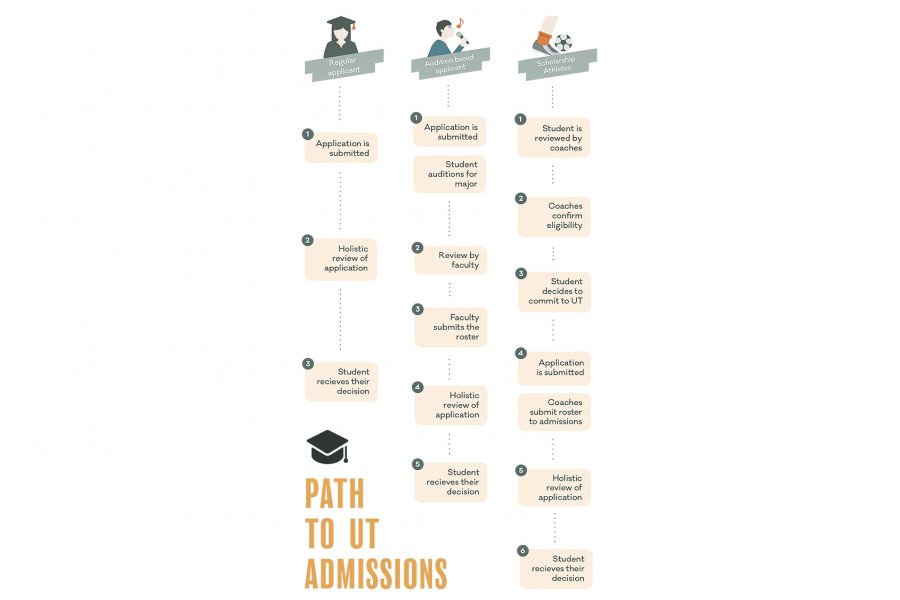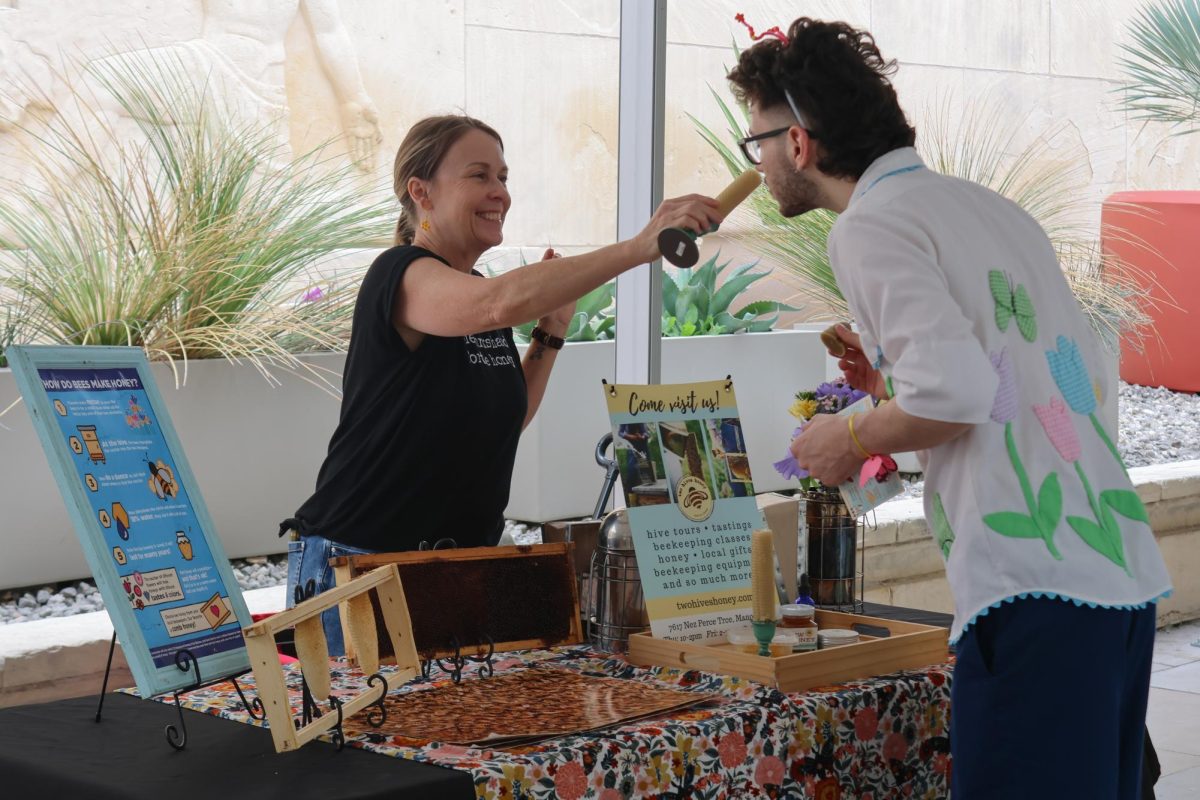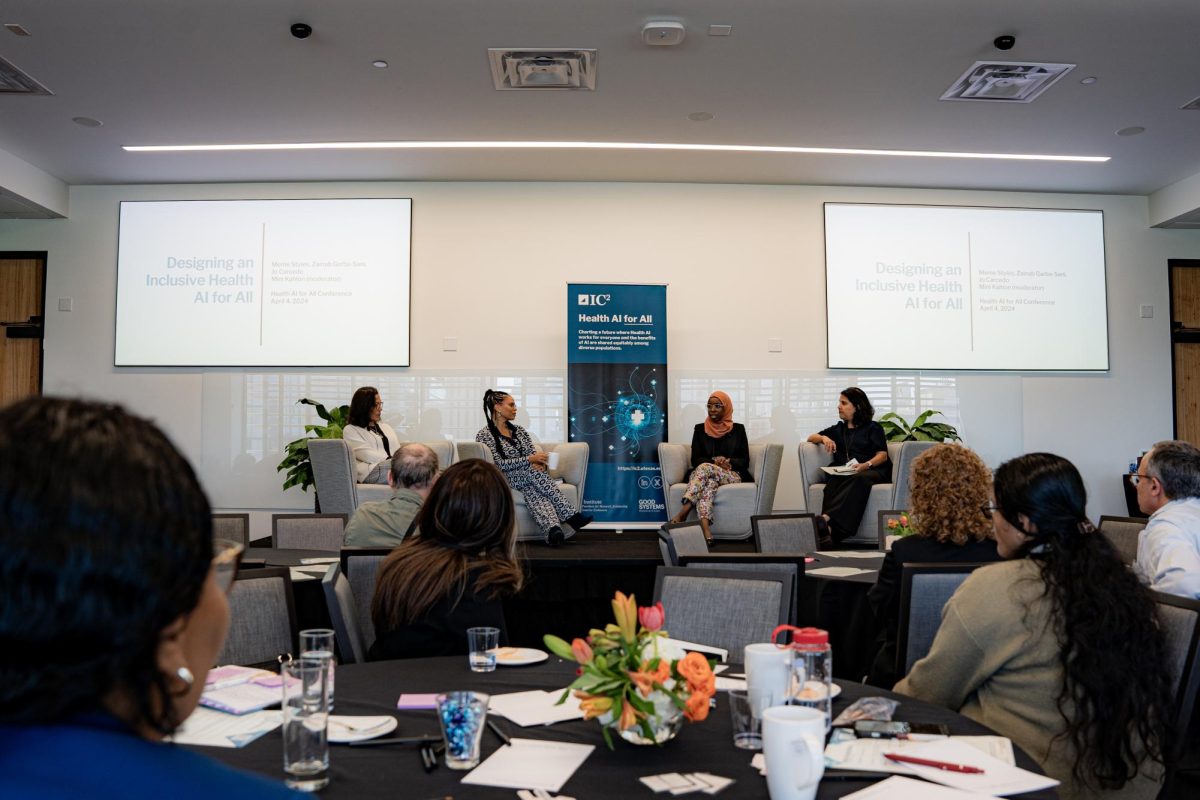UT’s admissions process is complicated.
The University’s admissions process — especially for athletes on scholarship — came under national scrutiny on March 12 after now-fired men’s tennis coach Michael Center pled guilty of accepting a bribe of approximately $100,000 to facilitate the admission of a student as a men’s tennis recruit in 2015.
At peak season, approximately 120 admissions officers sifted through thousands of applications in less than three months. Each of the more than 50,000 applications were reviewed by two officers for about 15-20 minutes each. The most recent admissions data available from 2017 shows 62% of students did not receive offers of admission into UT.
For most students, the admissions process begins with a holistic review.
University spokesperson J.B. Bird said admissions officers are not allowed to consider legacy status, monetary donations or information that might have undue influence during the holistic review. Instead, the officers score all applications based on factors such as class rank, SAT and ACT scores, essays, race and special circumstances.
The admissions team then makes a decision after calculating different admissions “targets,” or enrollment goals, which often depend on the school the student is applying to.
“The classic example in admissions is, ‘You don’t admit an orchestra full of oboe players,’” Bird said. “So when you have gotten your ‘oboe players’ — if they haven’t graduated — you may not be looking to admit more than one or additional ‘oboe players.’”
All Texas students who graduate in the top 10% of their high school class receive automatic admission to state-funded universities under a state law passed in 1997, but UT can lower the percentage because of an amendment added to the bill in 2011.
The automatic admissions threshold set by UT — which was 6% for students applying in 2018 — means UT admits all students at or above the threshold and then decides whether or not to accept the students into their first-choice major during the holistic review. According to UT Enrollment Management, 52% of automatically admitted students were accepted into their first-choice major in 2018.
The Coordinated Admission Program (CAP) is offered to the majority of Texas residents who are not admitted to the University. CAP offers qualifying students admission into other participating UT System universities and guarantees them the opportunity to transfer after a year to UT’s College of Liberal Arts.
A small percentage of Texas residents can be offered alternative entrance through the Path to Admission through Co-Enrollment program (PACE) where students take classes at UT and Austin Community College-Rio Grande for one year and then receive automatic admission to certain majors at UT.
Out-of-state and international students do not qualify for these programs and can only receive an offer of admission or a rejection. Any applicant who is rejected can appeal the decision if there is new and compelling information about academic performance, extracurriculars or extenuating circumstances that was not originally provided in the application.
A ‘different’ admissions process
While every applicant goes through the holistic review, Bird said there’s no question that the admissions process is “different” for students who apply for specific audition-based majors or to be scholarship athletes.
Faculty review additional materials, such as a portfolio or an audition tape, submitted by students applying to certain music, theatre and dance and art majors. Coaches will also review “auditions” by people applying to be scholarship athletes, which can consist of a submitted tape or in-person reviews.
Before people applying as scholarship athletes or audition-based majors submit their application, UT coaches and faculty work with admissions to confirm the eligibility of the students they are recommending. Bird said faculty and coaches usually do not recommend students who they believe will not be admitted.
“Generally speaking, the acceptance rate for scholarship athletes could be 100% some years or will be close to 100% in other years because (the coaches have) worked before they’ve extended the scholarship offer to make sure the person is eligible,” Bird said.
Admissions officers then review the applicants and sometimes reject the recommended students, but generally defer to the assessments by the coaches and faculty. However, Bird said the officers may discuss whether a scholarship athlete is prepared for their first-choice major with the coaches or faculty.
Jim Davis, UT’s vice president for legal affairs, is currently reviewing the U.S. Department of Justice’s accusations of fraud against Michael Center and the rules and procedures in place to prevent future violations. Bird said Texas Athletics and Texas Admissions officials will not comment on the University’s admission process until the review is finished.




















